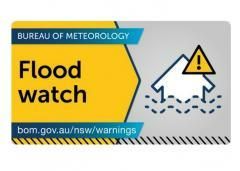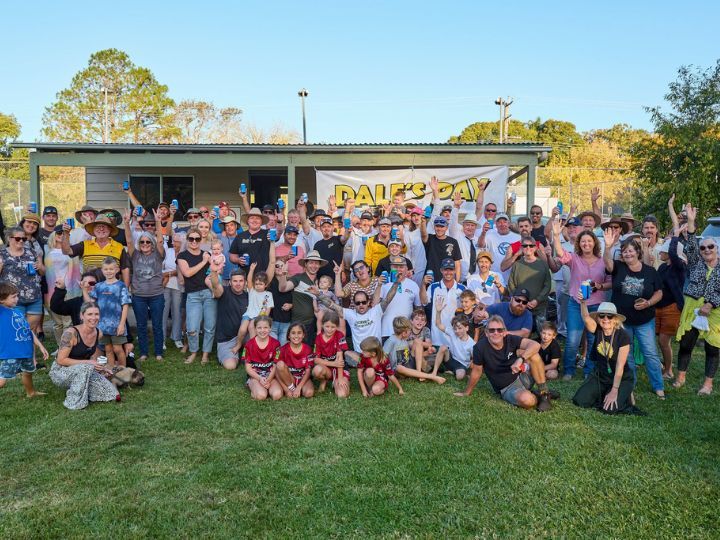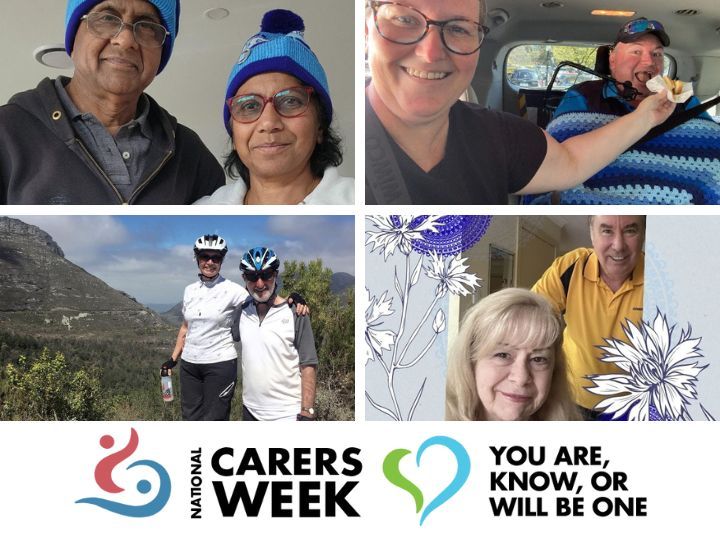With further incidents of heavy rain and flooding across NSW, we've put together some hints and tips on what to do if you're affected.
Before a Flood
It's good to be prepared for a natural disaster such as flooding, but it's even more vital to have a plan in place if you are living with motor neurone disease to ensure you and your family stays safe and can access the care you need.
1. Prepare a flood plan, including likelihood of your current location flooding, how to evacuate if needed, and other vital information. You can find information that can help with you and your families' flood plan decisions here.
2. Prepare a 'go-bag' containing items such as vital documentation, care instructions, medications, clothing and some food and drink. Particularly if you require specific feeding preparations, such as thickened foods or fluids, or feed through a PEG tube, make sure you pack these to take with you if you need to evacuate, and food and supplies are limited. Pack any other important or sentimental items you will not be taking with you as high as possible in your home.
3. Make plans to stay with friends or family away from flood zones - it's a good idea to arrange a place to stay in the event you need to evacuate. If they can have a room prepared, some food and drink (especially if it is specialised) and items of clothing, it will make your stay easier in the event you need to arrive at short notice. If you can choose to stay with family and friends close to a hospital, and with reliable power this will also make it easier if you have more complex care needs and need to seek assistance urgently.
4. Leave sooner rather than later - stay up to date with flood level information, evacuation notices for your area and more. Keep an eye on road closures, download the Floods Near Me app or follow Live Traffic NSW. Particularly if you are living with MND, it is better to head to your safe location to stay with family and friends sooner rather than later. This will give you time to transport your mobility and care equipment to keep with you at your evacuation location and you will not run the risk of getting stuck at your current location and requiring rescue.
This is particularly important in rural and regional areas, even if you are not directly affected by flooding, you may still lose access to power, water, phone and internet, making it difficult to get appropriate care or call for help if needed - plan ahead as much as possible to ensure you stay safe.
5. If you are unable to travel to another location whilst flooding occurs, you have followed emergency personnel advice and evacuation orders, and you feel you will be safe in your current location, ensure you have prepared your home accordingly.
The SES Floodsafe website has more information on how to prepare for a flood, including sandbagging and making a flood plan. Ensure you have your phone fully charged, your go-bag ready, and emergency contact details for the SES (132 500) and police (000) in case you decide to leave or require rescuing.
Places for flood preparation information include:
- I'm Okay website
- Your local council website
- ABC Emergency
- SES
- Bureau of Meteorology - weather and warnings
- Bureau of Meteorology - river heights
During or After a Flood
Wondering what to do if you are currently experiencing flooding, or water is receding and you're hoping to get back home as soon as possible?
1. If you are currently in danger or need to request assistance for a family member affected by flooding, contact the SES on 132 500, or for urgent assistance, police on 000.
You may be asked to provide details like address or landmarks nearby the house, names of you and the person/s needing assistance, ages and anyone else likely to be with them. You may also need to notify emergency personnel of your health status and needs, such as whether the person with MND has any mobility, breathing or speech issues, and if they need to remain with a carer known to them wherever possible.
2. Stay up to date with evacuation orders and river levels, and follow instructions on when and how to evacuate, and where to evacuate to. Follow your prepared flood plan where possible and download the Floods Near Me app.
3. Do not drive, or attempt to swim or paddle, through floodwaters - it can be hard to tell how deep the water is, if there is debris or missing road or footpath under the surface, and the current can be much stronger than it looks.
4. If you have been evacuated to a community evacuation centre, or another private residence, explain your care needs and try to ensure your main carer stays with you. Note any care needs you may have, as often there are medical professionals onsite, and medication, food or care equipment may be arranged where available if you have been unable to brings these things with you.
5. Medications - you may have lost your medications, scripts or more during the flood or evacuation. In this case, you can contact your GP or usual healthcare provider (or pharmacy if they have digital scripts) for a script or replacement items. In the event they are affected by flood, you may still be able to reach your specialist who likely has copies of your medication details or scripts on file that you can present to a pharmacy. If you require any urgent medical help or cannot get medications, present to medical staff at the evacuation centre, or your local hospital.
6. Finding loved ones affected by flooding - if you have been unable to contact loved ones who have been affected by flooding or you have been unable to contact loved ones to let them know you are safe, you can register yourself or search for loved ones on the Register.Find.Reunite website.
7. If water is receding and you are attempting to return home, follow local council, SES, and other emergency personnel instructions. Depending on damage caused to your property, you may not be allowed back into the property or able to use certain tools or equipment until checks have taken place to ensure the building is structurally safe, electrical checks have been carried out, and any water pipe breaks have been repaired. There is more information on safely entering your property again here.
8. You may need help with cleaning your home if it is safe to enter - register your details with evacuation centres, or local volunteer organisations. Depending on your location, you can register your details, or call:
- SES - 132 500
- Support a Mate
- NSW Dept of Primary Industries and Local Land Services - Agricultural and Animal Services Functional Area (AASFA) 1800 814 647 - flood-affected farms and landholders
You may also be able to find out more details for clean-up information and assistance requests from your local council website, or local Facebook community groups in your area. If you are cleaning your own house, or your friends and family are, there are tips for cleaning safely here.
Remember BEFORE you or your clean-up helpers start cleaning out your flood-affected property, take plenty of photos of items, the state of the property, and in some cases even keep samples such as fabric cuttings of items; like carpets or soft furnishings that you need to dispose of immediately to avoid them becoming a health hazard.
There is more information on details to collect so you or your landlord can make insurance or assistance claims here.
9. Moving back in - whether you are a tenant, or own your home, you may be able to claim contents insurance. There are tips for what to do with homes and vehicles you own after a flood here. You can also get more information on how to prepare an insurance claim here. For further details on legal and insurance assistance available to you following a flood, visit the Service NSW website.
If you are renting and unsure of your rights when repairs are needed following a flood, or you need to request repairs, there is more information here.
10. Further assistance - you may be eligible for a range of local, state or federal funding or disaster grants depending on your circumstances. There is also assistance for mental health, replacing documents that were lost or damaged, vehicles and accommodation following a flood and more.
You can even book a personalised flood assistance appointment to find out what support you are eligible for here. Visit the Service NSW website for resources and more details.
More information:
- Insurance Council of Australia - What to do in the event of a flood
- Service NSW - Floods
- SES
- Bureau of Meteorology




